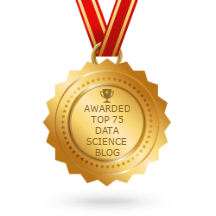I am doing poor documentation of my code in my blog. I am trying to improve my documentation abilities. This blog is based on post
There are different key components involved in the similarity search
1. Data Collection
2. Generating Feature Vectors
3. Finding Similar matches based on different approaches
Step #1 - Dataset used for data collection is from Caltech 101 dataset. This contains several different classes.
Step #2 - Feature Vector generation is based on leveraging pre-trained networks. Use Existing pre-trained networks, removed the last layer. Retain the Feature vector, the flattened layer.
Step #3 - NearestNeighbors is the algorithm used to find nearest neighbors, The options are ‘ball_tree’, ‘kd_tree’, ‘brute’ will use a brute-force search, ‘auto’
Results
There are different key components involved in the similarity search
1. Data Collection
2. Generating Feature Vectors
3. Finding Similar matches based on different approaches
Step #1 - Dataset used for data collection is from Caltech 101 dataset. This contains several different classes.
Step #2 - Feature Vector generation is based on leveraging pre-trained networks. Use Existing pre-trained networks, removed the last layer. Retain the Feature vector, the flattened layer.
Step #3 - NearestNeighbors is the algorithm used to find nearest neighbors, The options are ‘ball_tree’, ‘kd_tree’, ‘brute’ will use a brute-force search, ‘auto’
Results
Happy Learning!!!




























